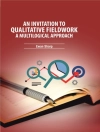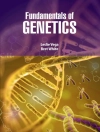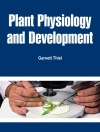Introduction to Plant Biotechnologyis a precise process in which scientific techniques are used to develop molecular and cellular-based technologies to improve plant productivity, quality and health, quality of plant products or to prevent, reduce or eliminate constraints to plant productivity caused by diseases, pest organisms and environmental stresses. Introduction to Plant Biotechnologyin use today relies on advanced technology, allows plant breeders to make precise genetic changes to impart beneficial traits to plant. The practice of Introduction to Plant Biotechnologyhas been around for centuries. Using less advanced methods, early farmers and plant breeders laboured to improve plants. The field of Introduction to Plant Biotechnologyis concerned with developing ways to improve the production of plants in order to supply the world’s needs for food, fibre and fuel. Plants provide us many pharmaceuticals and industrial compounds. To increase the quantity of crop production as well as to produce specific characteristics in plants, biotechnologists are using selective gene techniques. Introduction to Plant Biotechnologyis an extension of this traditional plant breeding with one very important difference-Introduction to Plant Biotechnologyallows for the transfer of a greater variety of genetic information in a more precise and controlled manner. This more precise science allows plant breeders to develop crops with specific beneficial traits and without undesirable traits. Many of these beneficial traits in new plant varieties fight plant pests-insects, disease and weeds-that can be devastating to crops. Others provide quality improvements, such as tastier fruits and vegetables, processing advantages, such as tomatoes with higher solids content, and nutrition enhancements, such as oil seeds that produce oils with lower saturated fat content. Crop improvements like these can help provide an abundant, healthful food supply and protect our environment for future generations.This second edition of the textbook is prepared including Multiple Choice Questions at the end of the book for the benefit of the students. This book is divided into 28 chapters Abbreviations, diagrams, figures, tables, glossary and index supplement the text. All the topics have been covered in a simple and lucid style to help the reader grasp the information quickly and easily. This book is an essential reading for all students and teachers of life sciences, biotechnology, microbiology, bioinformatics as well as researchers in these allied fields. The book will also be useful to students pursuing B. Tech. in agricultural engineering. It caters to the requirement of the syllabus prescribed by various universities for undergraduate students pursuing engineering courses.
Christop Vandervort
Introduction to Plant Biotechnology [EPUB ebook]
Introduction to Plant Biotechnology [EPUB ebook]
Achetez cet ebook et obtenez-en 1 de plus GRATUITEMENT !
Format EPUB ● Pages 524 ● ISBN 9781684698295 ● Maison d’édition White Press Academics ● Publié 2019 ● Téléchargeable 3 fois ● Devise EUR ● ID 8023133 ● Protection contre la copie Adobe DRM
Nécessite un lecteur de livre électronique compatible DRM












